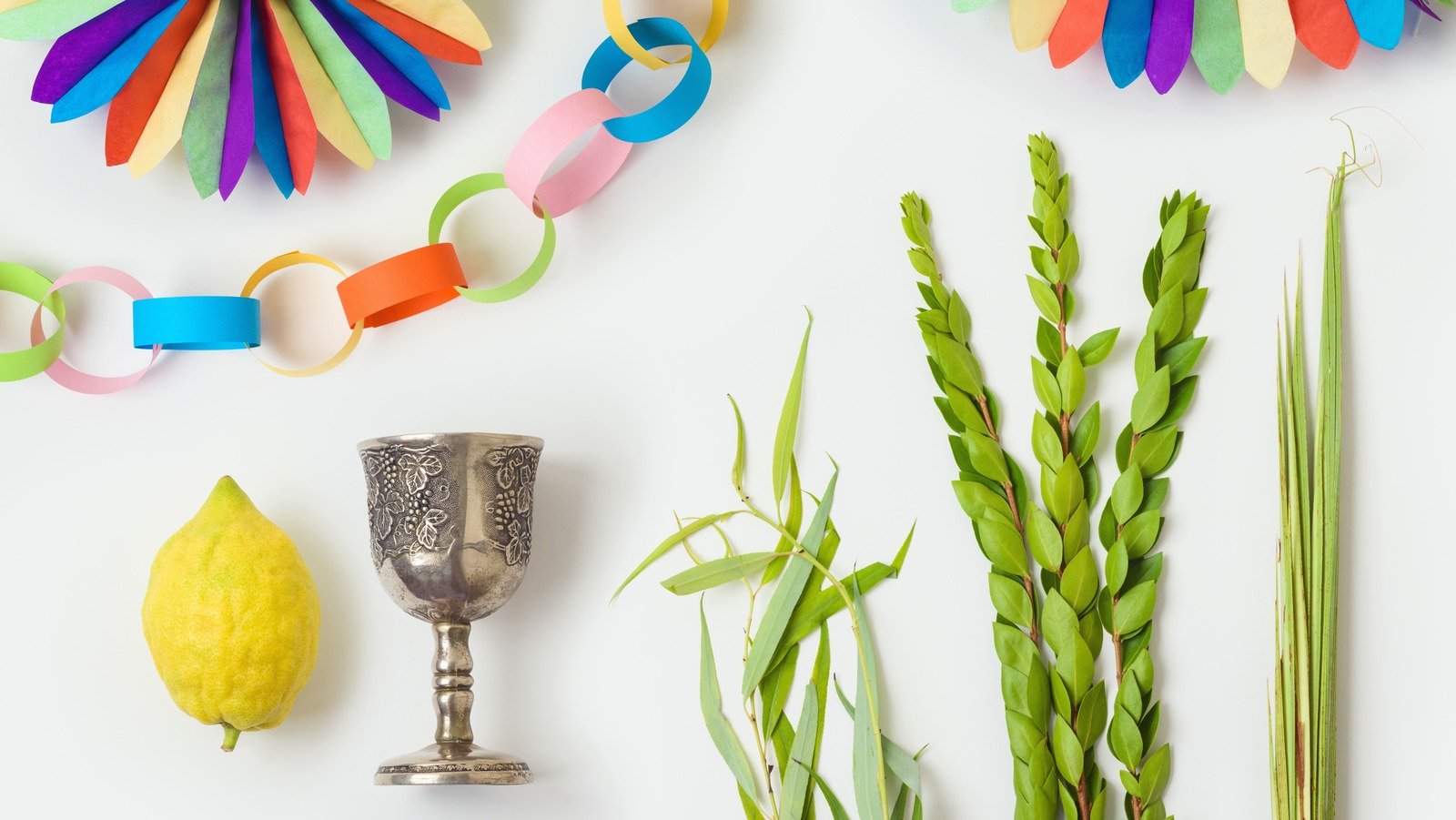8 Foods And Traditions To Celebrate Sukkot
Sukkot is a joyous Jewish holiday that celebrates the fall harvest and commemorates the Israelites’ 40 years of wandering in the desert after their liberation from Egypt. It is a time to gather with family and friends, express gratitude for the bounties of life, and observe various traditions. One of the most important aspects of Sukkot is the food, which plays a significant role in the festivities. In this article, we will explore eight traditional foods and customs that are associated with Sukkot.
The Sukkah – A Symbol of Shelter
The sukkah is a temporary booth or hut that is constructed outdoors during Sukkot. It serves as a reminder of the makeshift dwellings the Israelites lived in during their journey in the desert. Observant Jews not only eat their meals in the sukkah but also sleep and socialize in it. Decorated with fruits, vegetables, and other harvest symbols, the sukkah represents the reliance on nature’s provisions and the impermanence of material possessions.
Lulav and Etrog – A Symbolic Bundle
During Sukkot, Jews hold the lulav and etrog, which are known as the “Four Species.” The lulav consists of a palm branch, willow branches, and myrtle branches, while the etrog is a citron fruit. These items are combined and waved in six directions during prayer services on each day of Sukkot. The lulav and etrog symbolize the unity of the Jewish people and the importance of bringing together different individuals and communities.
Chol HaMoed – Sandwiches for the Journey
Chol HaMoed is the intermediate days of Sukkot, which fall between the first and last two days. During this time, families often embark on day trips or outings to enjoy nature and celebrate the holiday. To commemorate the Israelites’ journey in the desert, it is customary to pack sandwiches made with leftover meals from the sukkah. These sandwiches not only serve as a practical and portable meal but also connect the present generations with their ancestors.
Stuffed Cabbage Rolls – A Symbol of Plenty
Stuffed cabbage rolls, also known as holishkes or golubtsi, are a favorite Sukkot dish. These delicious rolls are filled with ground meat, rice, and spices, then simmered in a flavorful tomato sauce. The shape of the cabbage rolls symbolizes the abundance of food during the fall harvest season. It is a tradition to prepare and serve these hearty rolls, which bring warmth and nostalgia to the Sukkot table.
Honey Cake – Sweetness and Blessings
Sukkot often coincides with the Jewish New Year, Rosh Hashanah, which is a time to reflect, repent, and seek blessings for the coming year. To celebrate this connection, honey cake is a staple dessert during Sukkot. Made with honey, spices, and sometimes dried fruits, this moist and decadent cake represents the hope for sweetness and abundance in the upcoming year.
Pomegranates – Seeds of Prosperity
Pomegranates hold a special significance during Sukkot. The juicy seeds inside the pomegranate represent fertility, prosperity, and the many blessings of life. It is customary to consume pomegranates or incorporate them into recipes during Sukkot. From sprinkling the seeds on salads to garnishing dishes or incorporating them into desserts, the vibrant red fruit adds a touch of elegance and symbolism to the holiday table.
Harvest Vegetable Soup – Nourishment and Abundance
Sukkot is all about celebrating the season’s bountiful harvest. In that spirit, a warm and comforting harvest vegetable soup is often prepared. Packed with hearty vegetables, such as carrots, potatoes, squash, and beans, this soup represents nourishment and sustenance. It is a wonderful way to utilize the fresh produce of the season while sharing a delicious and healthy meal with loved ones.
Mehadrin Dairy – Honoring Judith’s Heroic Act
Another Sukkot tradition is the consumption of dairy dishes, known as Mehadrin. This custom is inspired by the story of Judith, a Jewish heroine who played a vital role in the victory of the Israelites over an invading army. To celebrate her bravery, it is customary to honor Judith by enjoying dairy-based meals, such as cheesecake, blintzes, or a delightful lasagna. Dairy dishes symbolize the strength and resilience of women throughout history.
Conclusion
Sukkot is a joyous occasion filled with cherished traditions and delicious food. From the sukkah to the lulav and etrog, each tradition carries symbolic significance and strengthens the bonds of community and faith. The various dishes associated with Sukkot, such as stuffed cabbage rolls, honey cake, and pomegranates, remind us of the abundance and blessings of the harvest season. So, as you gather with loved ones to celebrate Sukkot, let these traditions and foods nourish your body, mind, and spirit.
*Source www.tastingtable.com




































